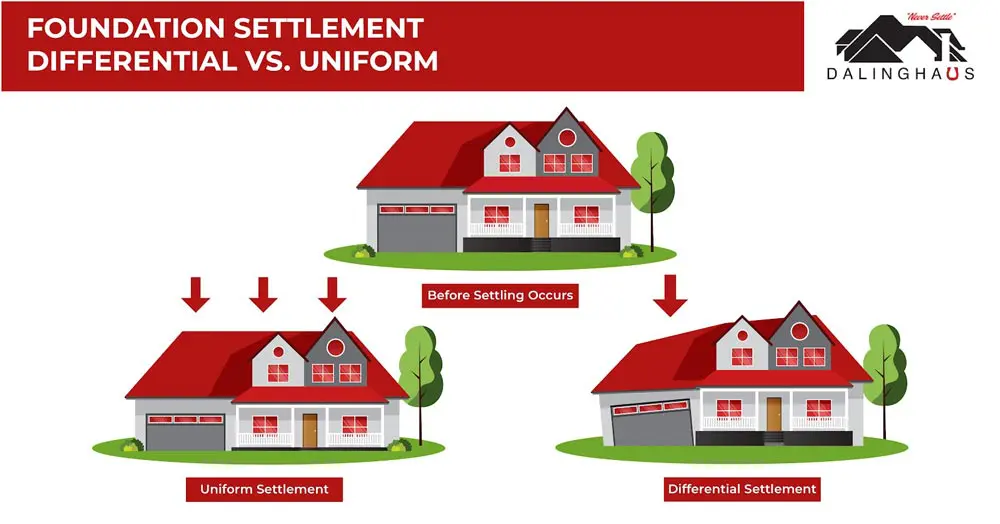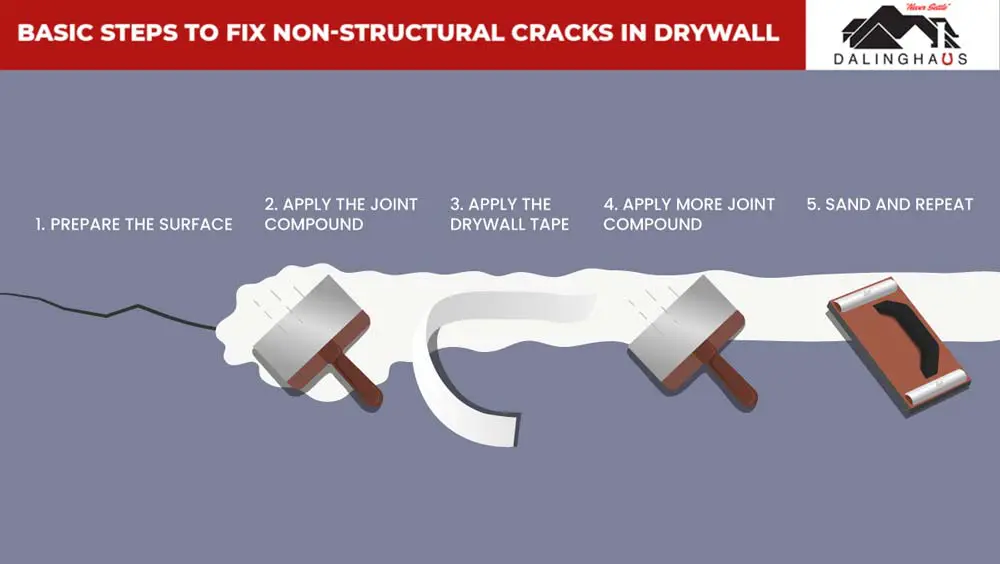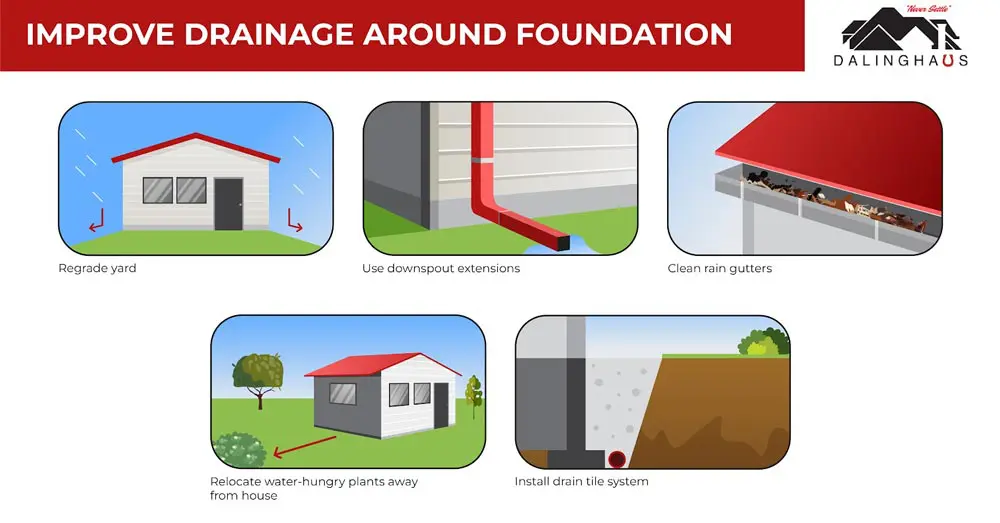Are you considering fixing drywall cracks by yourself as a DIY project? We don’t recommend it. In fact, we’re here to tell you why DIY patching of drywall cracks is a bad idea. We’ll review the causes of drywall cracks, why you need to repair damaged drywall, why you shouldn’t attempt this yourself, and more.
What Causes Drywall Cracks?

Drywall is a widely used construction material famous for its affordability, ease of installation, and sturdiness. However, while drywall may seem durable at first glance, it’s prone to developing cracks over time. These cracks can occur for several reasons, including the following:
- Poor installation – Drywall is only as strong as its installation. If the drywall isn’t installed correctly, the material can begin to crack. This often happens because the installer didn’t use enough drywall mud. Eventually, the drywall tape becomes loose, and then you have a crack on the seam.
- Humidity changes – When the air becomes humid, organic building materials, such as wood framing, expand and contract as humidity levels increase or decrease. This expansion in the framing is what ultimately causes cracks to show in drywall.
- Age – As drywall ages, it becomes brittle and prone to cracking. The older the drywall, the more likely it is to crack.
- Uniform settlement – After a structure is built, it will settle into the ground slightly. This can cause small drywall cracks.
- Differential settlement – While a small amount of uniform settlement is pretty common in new buildings, differential settlement – i.e., uneven settlement – is another matter. Differential settlement puts a lot of stress on a foundation and, if it isn’t fixed, will cause structural damage which could manifest as drywall cracks. The best way to explain differential settlement is through an illustration:

For more information, see Foundation Problem Pictures.
Why You Need to Repair Damaged Drywall
Drywall damage is common, especially in high-traffic areas such as hallways and living rooms. Furniture bumps and hanger scratches leave unsightly marks on the walls. However, damaged drywall can have more significant consequences beyond the cosmetic aspect. These include the following:
- Compromised structural integrity – Drywall is essential to residential and commercial construction, providing a fire-resistant barrier, insulation, and soundproofing properties. When drywall is damaged, it can break down over time and expose the underlying frame, wires, or pipes. Water damage, for instance, can lead to mold growth, which poses a health hazard and can spread rapidly if not contained.
- Pest infestation – Damaged drywall can become a breeding ground for pests such as mice, rats, and insects. Small gaps or cracks can allow rodents and bugs to infiltrate homes. Moreover, pests can chew on damaged drywall, exacerbating the problem and leading to costly repairs.
- Reduced indoor air quality – Leaving drywall damage unrepaired can also affect indoor air quality and increase energy bills. Cracks or holes in the walls can allow air drafts to infiltrate your home, reducing the insulation effect and leading to higher heating and cooling costs. Additionally, the accumulation of dust and debris in the damaged areas can trigger allergies or respiratory issues in sensitive individuals.
Why DIY Patching of Drywall Cracks Is a Bad Idea
While it might be tempting to save a few bucks and try to fix a drywall crack yourself, hiring a professional is almost always the better choice. Here’s why:
- It’s a quicker repair – Time is money, and a DIY job will inevitably take longer than a professional one, especially if there are mistakes or complications.
- A pro can easily spot underlying problems – A professional foundation repair contractor has the skills and knowledge to fix the drywall crack and identify the underlying issue that caused the crack. For example, drywall cracks can be caused by differential foundation settlement. This is a serious problem that needs to be promptly addressed to prevent further structural damage.
- The pros have the right tools and equipment – A DIY job might involve using spackle or joint compound and a putty knife. Still, the pros have specialized tools like taping knives, sanding blocks, and drywall saws that allow them to work with greater accuracy and efficiency.
- You save time and money in the long run – While it might seem cheaper to do it yourself, if you don’t have the necessary skills or knowledge, you could create a bigger problem.
How Much Do the Pros Charge to Repair Drywall Cracks?
The cost of drywall crack repair largely depends on the size, location, and severity of the damage, as well as your geographical location. On average, professional drywall crack repair service can cost anywhere from $75 to $150 per hour, with an additional fee for materials. Minor cracks in the wall or ceiling may require only a quick patch and sanding, costing around $200 to $300.

For larger cracks or those that are more difficult to access, the repair process may involve cutting out the damaged area, installing a new piece of drywall, applying joint compound, and sanding for a smooth finish. This can cost between $500 to $1,000 or more, depending on the extent of the damage and the location of the crack.
It’s important to note that some contractors may charge a flat fee for a certain amount of work, while others may bill hourly. It’s essential to get multiple quotes and compare them to ensure you get a fair price for the repair services.
Cost to repair a drywall crack caused by a foundation problem
If a foundation problem caused the drywall crack, the repair cost may be significantly higher as it involves addressing the root cause of the damage.
Underpinning, the most common repair solution for correcting differential settlement, can cost tens of thousands of dollars in some cases. Therefore, it pays to do everything possible to keep your home’s foundation healthy. We’ll talk more about how to do this below.
How to Prevent Drywall Cracks
Preventing drywall cracks caused by poor installation
The best way to prevent these types of drywall cracks is to ensure the drywall is installed correctly. This includes paying attention to the spacing and placement of screws or nails, maintaining a consistent distance between all layers of drywall, and ensuring all seams are taped and finished with the correct amount of suitable joint compound.
Preventing drywall cracks caused by differential foundation settlement
One of the most effective ways to avoid differential settlement is to regrade the yard around the home, which involves adjusting the slope of the soil to ensure that water flows away from the foundation. This can be especially important in areas with heavy rainfall or other water-related issues.
Regularly cleaning gutters and using downspout extensions can also help direct water away from the foundation.
It’s also essential to keep trees away from the foundation, as roots can cause significant damage to a foundation over time. If necessary, consider removing trees or other plants that are too close to the house.
Finally, installing a drain tile system can be an effective way to help prevent water from accumulating around the foundation. This involves the installation of a buried, perforated drainage pipe that collects and carries water away from the foundation.

Other ways to help prevent drywall cracks
Since fluctuations in temperature and humidity can lead to cracks, keeping a consistent indoor climate can also help prevent cracking.
Installing insulation behind the drywall can also help stabilize the temperature and reduce the potential for cracking.
Another preventative measure is regular maintenance. Checking for and repairing any drywall cracks as soon as they appear can prevent them from becoming larger and more difficult to fix.
If you’re concerned about drywall cracks in your Southern California, Arizona, or Nevada home, contact us today to schedule an evaluation. If we find a problem, we’ll give you a repair estimate.






